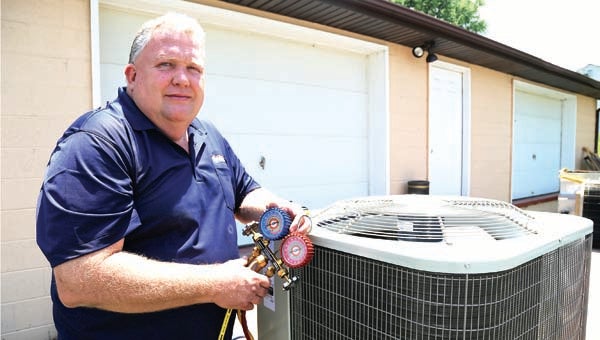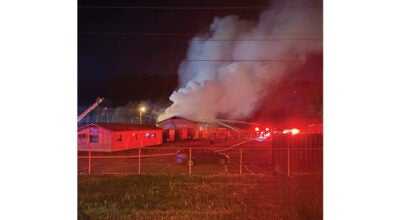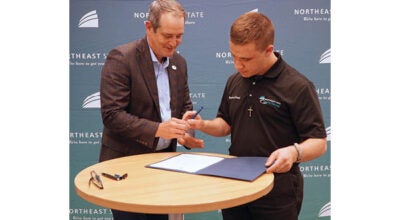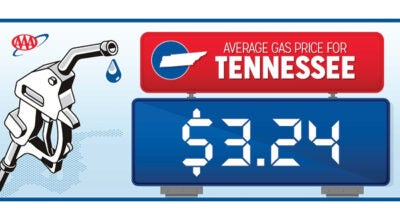Tips for keeping cool about energy costs during summer heat
Published 9:19 am Friday, June 26, 2015

Star Photo/Kayla Carter
Climate Controllers President Steve Tipton explains how his company conducts inspections on heating and cooling units to ensure they are working efficiently.
Whether it’s summer or winter, regulating the temperature inside homes and businesses can become costly.
It can really pay off to pay attention to all the ways heat enters and cold air exits a home, according to Elizabethton Electric Department’s Marketing and Industrial Relations Coordinator Ken Markland.
Markland wanted to share some tips and tricks with the community for reducing cooling costs at home and at the office.
With an overload of information swirling around on the Internet, Markland said most of it is a marketing ploy. That’s why he likes to focus on low and no cost options.
“People will put things out there that cost hundreds of dollars,” he said.
With temperatures reaching up into the 90s, it may be tempting to turn the thermostat down. Markland asks the community to stop and think about how much extra strain that puts on heating and cooling units as well as the wallet.
Some people may recommend buying a programmable thermostat with additional features that claim to cut costs, but the price may outweigh the benefit, Markland said.
“That will come at a cost,” he said. “They are not cheap.”
A normal programmable thermostat will do, he said.
“They just need to program it to a temperature that is comfortable,” he said.
Markland suggests setting the thermostat at 75 and leaving it there.
“Every degree the temperature is lowered, it’s around 3 or 4 percent of the entire electric bill,” he said.
While he is aware that many people prefer it to be cooler than that, he has a more cost effective solution — a fan.
“If you just set the thermostat to where you’re comfortable, you can then take a fan and turn it on low,” he said. “By just circulating the air, it makes it more comfortable.”
There are also many factors that can contribute to a home’s overall temperature that the community may not realize, Markland said.
Of course there are a few year-round and common sense cost savers like always turning off the lights in an unoccupied area, but Markland takes it a bit further.
“Closing the curtains can also help keep heat from entering a house,” he said. Focus should be more on curtains on the south side of a home or business because it sees the most sun throughout the day, he said.
“Some curtains even have sunblockers in them,” he said. “They have a higher insulation factor.”
Most appliances in the home will generate some kind of heat when left on constantly, so just unplugging them could reduce heat as well as cost, he said.
The kind of bulbs used in a home also contribute to the overall heat in a home.
“Using compact florescent bulbs requires 75 percent less energy than incandescent bulbs,” he said. “They are also not as hot as incandescent.”
In order to keep cooler air from escaping a home, Markland recommends putting caulking and weather stripping around windows and doors.
“If you do that, air can no longer escape your home,” he said. “Sometimes they get worn and people don’t realize it, but they are easy to replace.”
Changing the filter on a heating and cooling unit also helps save money, Markland said.
“Leaving them dirty makes it work harder,” Markland said.
For the maximum benefit, they should be changed monthly. Markland also has a great way of remembering to change it out.
“Every time you get an electric bill, let that serve as a reminder to change it,” he said. “That can be your prompt.”
Installing low flow faucets and shower heads are also a low cost option.
“What that does is when you’re taking a shower, there’s less hot water used for the same amount of time you’re in the shower,” he said. “Some of them even have the same force with not as much water being used.”
Having heating and cooling systems inspected seasonally may also help.
“They will inspect duct work and clean coils,” Markland said. “That will make a unit more efficient if everything is taken care of.”
Markland also had online resources for assessing a home or businesses efficiency.
The website energyright.com allows users to conduct an audit online.
“When it’s done, it will give suggestions of things you can do be more energy efficient,” he said. “It’s not as indepth as when they come to your house, but this one is free.”
The Tennessee Valley Authority will also come to a home or business to conduct an audit for a fee of $75, Markland said.
“They check the entire home and give a report on everything,” he said. “It will help you make a more informed decision on how best to spend your money. They also have some incentives like rebates.”
Setting the water heater temperature to 120 degrees is also an option to consider.
“It could save you some money,” Markland said. “Some people run them to 130 or 140 degrees.”
At 120 degrees, no one has to worry about being scalded either, he said.
It also pays to use cold water for laundry instead of hot water.
While it’s not good advice in the winter if a home lacks moisture in the air, Markland said turning on the exhaust fan while in the shower can help regulate temperatures.
One of the last, but most simple tips with the most benefit, is to plant a tree near a home or business, Markland said. Trees are also aesthetically pleasing and release oxygen into the air.
“Shade on a house will also help keep it cooler,” he said. “Some people just don’t think of this for energy efficiency.”
Markland understands that most people just don’t realize how a few small steps could add up to large savings.
“Some people have just become complacent,” he said. “But, many of these things can be done in about ten minutes.”




